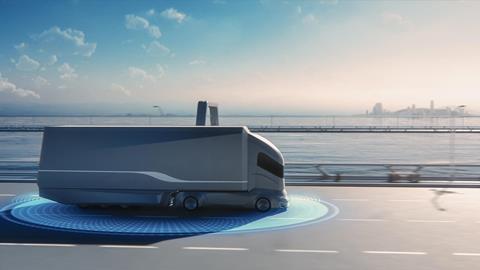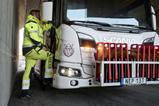Following the proposal by the European Commission to legislate further reduction in the average CO2 emissions from heavy duty vehicles, the truck manufacturers trade body ACEA has released a fact sheet providing an overview of the current regulations on CO2 standards. The document explores the necessary framework conditions to support a broader market uptake of zero-emission vehicles, highlighting the key considerations of the recently proposed regulations.
The fact sheet notes that road freight is an essential component of trade and commerce on the European continent, with trucks carrying 77% of all freight transported over land in the European Union. The heavy-duty sector accounts for just over a quarter of the greenhouse gas (GHG) emissions from road transport and about 6% of the EU’s total GHG emissions.

To address these emissions, the current CO2 standards require manufacturers to reduce emissions of new trucks by 15% by 2025 and 30% by 2030, compared to a mid-2019 to mid-2020 baseline. Almost three out of four new trucks are subject to the current CO2 reduction standards. However, the legislative review proposed by the European Commission on 14 February 2023 mandates for further reductions in average CO2 to 45% of the 2019 levels by 2030, 65% in 2035, and 90% in 2040.
With this extension of the CO2 standards regulation, over 98% of the sector’s CO2 emissions will be regulated. The fact sheet reviews the factors that determine the market uptake of zero-emission vehicles, such as battery-electric and hydrogen-powered trucks, and outlines what is required to achieve the current CO2 standards, as well as providing estimates on the fleet and infrastructure needed should the CO2 reduction targets increase further.
The fact sheet suggests building a solid business case that supports the operation of zero-emission trucks and buses will lead to a rapid market adoption of such vehicles and swift decarbonisation of road transport. To achieve this, the transport operators must be able to seamlessly recharge or refuel the new vehicles and operate them more profitably than their current conventionally powered trucks.
The ACEA’s fact sheet highlights the importance of regulations to reduce emissions from road transport, but also emphasizes the need for a supportive framework to ensure the market uptake of zero-emission vehicles. This includes the seamless integration of zero-emission trucks and buses into existing fleets, the development of a robust charging infrastructure, and the creation of a level playing field that supports the profitability of zero-emission trucks and buses.
Supporting documents
Click link to download and view these filesFact-sheet-CO2_standards_for_heavy_duty_vehicles
PDF, FileSizeText 0.64 mb


















